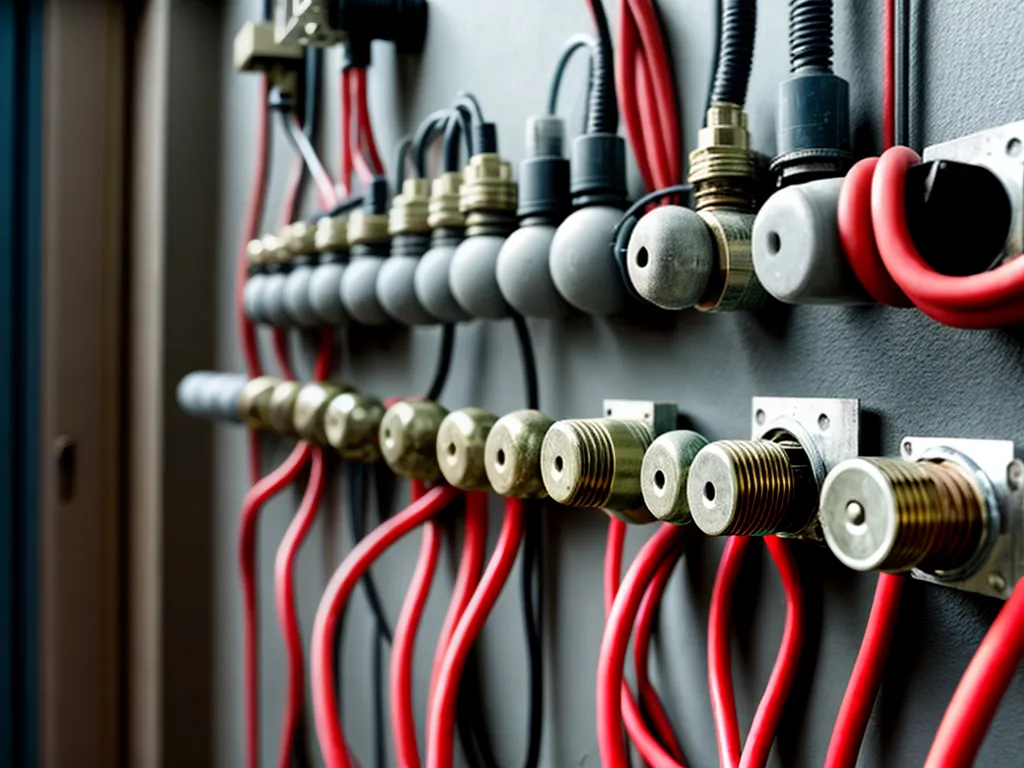
The Decline of Knob and Tube Wiring
What is Knob and Tube Wiring?
Knob and tube wiring was an early standardized method of electrical wiring used in buildings in Canada and the United States from about 1880 to the 1940s. It consisted of single insulated copper conductors run within wall or ceiling cavities, passing through joist and stud drill-holes via protective porcelain insulating tubes, and supported on nailed-down porcelain knob insulators.
This old type of wiring has since been replaced in new construction with newer and safer wiring methods, such as non-metallic sheathed cable ("Romex") and metal clad cables ("BX"). However, there are still many old homes that contain original, outdated knob and tube wiring.
Why Knob and Tube Wiring is Problematic
While knob and tube wiring was considered safe when it was first introduced, it does not meet today's electrical standards and can pose several risks, such as:
-
Fire hazard: The insulation on old wiring can become brittle and crack over time, exposing the conductors. This can lead to short circuits and overheating that can spark fires. The open air design also provides oxygen to feed any electrical fires.
-
Insufficient for modern loads: Knob and tube wiring was not designed to handle the power demands of modern devices and appliances. The wires are often undersized by today's standards.
-
Lack of grounding: Knob and tube circuits typically lack a grounding conductor, which protects against electrocution and shock hazards. Ungrounded wiring can be very dangerous.
-
Difficult to maintain: The wiring is difficult to access within walls, and splices were often made improperly. Replacing knob and tube wiring with modern wiring can be challenging and costly.
-
Insurance issues: Many insurance companies will not insure a home with knob and tube wiring due to the substantial risks. This can make it difficult to sell a home as well.
The Decline of Knob and Tube Wiring
Knob and tube wiring systems started to decline in popularity in the 1930s and 40s as safer electrical wiring methods were developed and adopted, such as armored cable (BX) and non-metallic sheathed cable (Romex).
The National Electrical Code (NEC) was developed in 1897 and started prohibiting unsafe wiring practices. The code has been updated over the decades to completely phase out knob and tube wiring:
-
In 1950, the NEC disallowed new knob and tube wiring in home construction. Only existing installations were grandfathered in.
-
In 1962, aluminum wiring was required for services over 100 amps, further reducing knob and tube use.
-
In 1975, the NEC disallowed any alterations or extensions to existing knob and tube wiring.
-
By the 1980s, almost all areas prohibited new knob and tube installations. Many started requiring it to be completely removed during renovations or upgrades.
-
As of the current 2020 NEC, there are no situations or exceptions where knob and tube wiring is still permitted or grandfathered in all new or existing installations.
So over the past 70+ years, knob and tube wiring has been completely phased out through evolving safety standards and building codes. While previously commonplace, it is now considered a dangerous relic of the past.
Dangers of Outdated Knob and Tube Wiring
While knob and tube wiring has declined drastically, I still encounter it regularly in old homes I am inspecting or upgrading. As an electrician, I emphasize to clients that it poses substantial safety hazards and should be completely removed. Some of the dangers I highlight include:
-
The brittle, cracked insulation leading to exposed live wires. I have measured hot wires carrying over 120 volts openly exposed due to insulation breakdown. This is an electrocution and fire risk.
-
Overfused circuits without adequate grounding or bonding. I often see 30 amp fuses on 15 amp knob and tube circuits. This can lead to fires or equipment damage.
-
Unsafe splices, such as wires twisted together with electrical tape, rather than properly soldered and wire nutted. This points to major ongoing maintenance issues.
-
Rats and other pests that can chew on the old insulation and expose conductors. I have seen entire attic wiring systems compromised by vermin.
-
Lack of safety devices like arc fault or ground fault interrupters that can prevent electrocutions and fire starts. Old wiring lacks modern protective devices.
I always recommend my customers completely replace old knob and tube wiring for health, safety, and liability reasons. The risks are simply too great to keep using this obsolete, dangerous wiring in a home.
Conclusion
Knob and tube wiring represented an important early standardized method that helped bring electricity into many homes. However, evolving safety codes and standards have now completely prohibited its use due to substantial fire and shock risks. As an electrician, I see these dangers regularly and advise customers to fully replace knob and tube wiring with modern, safer wiring methods. While previously common, knob and tube wiring has declined into obscurity and is now considered a dangerous relic of the past.